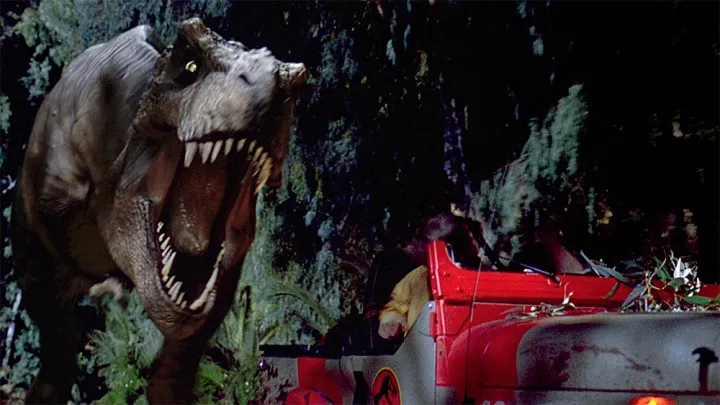
Using a state of the art, high performance N8 High Performance Computing (HPC) system, impressive 3D modelling technology, and some handy machine learning thrown in for good measure, researchers from Manchester University’s School of Earth and Environmental Sciences set out to bring the prehistoric “tyrant king” to digital life. This led to some new information regarding its biomechanics. TLDR version: Steven Spielberg lied to us.
What T. Rexes think about when they think about running
“There has been a big argument in paleontology about the likely running speed of T. Rex, with some people thinking that it was slow and others that it was fast,” lead investigator Dr. William Sellers told Digital Trends. “This has knock-on effects about how it must have hunted, and whether or not it was an active predator, or more of a scavenger. We’ve been working for a number of years using engineering and robotics techniques to study animal locomotion, and we thought that this was an ideal test problem for some of the technology we have developed.”
There were two main aspects to Manchester University’s study. The first was digitizing the dinosaur and creating a 3D simulation in the computer. This is something Sellers’ team has been working on for a number of years. Way back in 2013, Sellers used then-new laser-scanning techniques and an advanced computer modeling system to recreate the Argentinosaurus, a friendlier, herbivorous dinosaur that measured a whopping 131 feet and weighed as much as 80 tons.
The second part of the T. Rex study is the really groundbreaking bit, though. This is where the machine learning comes in, which was used to generate the necessary locomotion calculations and incorporate myriad hard and soft constraints in the simulation.
“[I utilized] completely unsupervised learning, using a goal criteria of ‘Get from A to B as fast as possible,’ and given enough computer time it can manage that all on its own,” Sellers explained. “This gets around the problem of just getting out what you put in. No one knows how T. Rex, moved but at least this way you have an objective optimization criteria to justify the choices made. It also means that it is relatively easy to add in extra constraints like ‘don’t break any bones.’ It’s basically a multi-physics, multi-objective simulation system.”
Must go faster!
The results sadly disprove one of our favorite childhood movie sequences. In 1993’s Jurassic Park, an injured Jeff Goldblum, riding in the back of a Jeep, is chased by a marauding escaped Tyrannosaur. Earlier in the movie, Sir Richard Attenborough’s character John Hammond says that the T. Rex has been clocked at running 32 miles per hour. According to Sellers, the real figures wouldn’t have been anywhere near that. Even an on-foot Jeff Goldblum would have been the odds-on favorite in a man vs. T. Rex sprint.
In the conclusions reached by the researchers, the T. Rex could not run due to its size and weight. This means it would have been unable to pursue prey at high speeds, and even its regular walking speed would have been hampered due to its unwieldy skeleton.
The news isn’t all disappointing, though. In fact, four words about the research project’s future are all but guaranteed to turn your frown upside down: Japanese Tyrannosaurs Rex robots.
“I am already working with some robotics groups in Japan to expand the capabilities of our simulations,” Sellers said. “Ultimately what I want to do is create a virtual Cretaceous where we can test various ideas about dinosaur and other plant and animal interactions. That would allow us to address many currently unanswerable questions in paleontology, and more importantly identify what gaps we have in our knowledge that need to further work. This is a major challenge but is something that is getting to be within the reach of modern computer systems.”
So a dinosaur robot theme park that’s basically Westworld meets Jurassic Park? We’re all over that! If any venture capitalists are reading this, you should totally get in touch!
You can check out an academic paper detailing the University of Manchester’s T. Rex project here.


